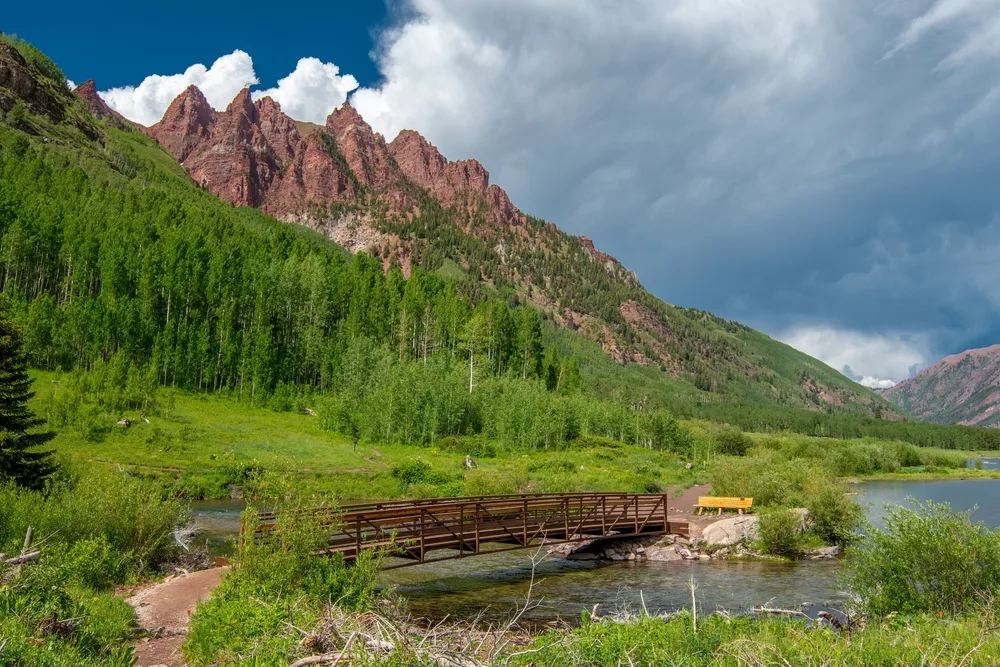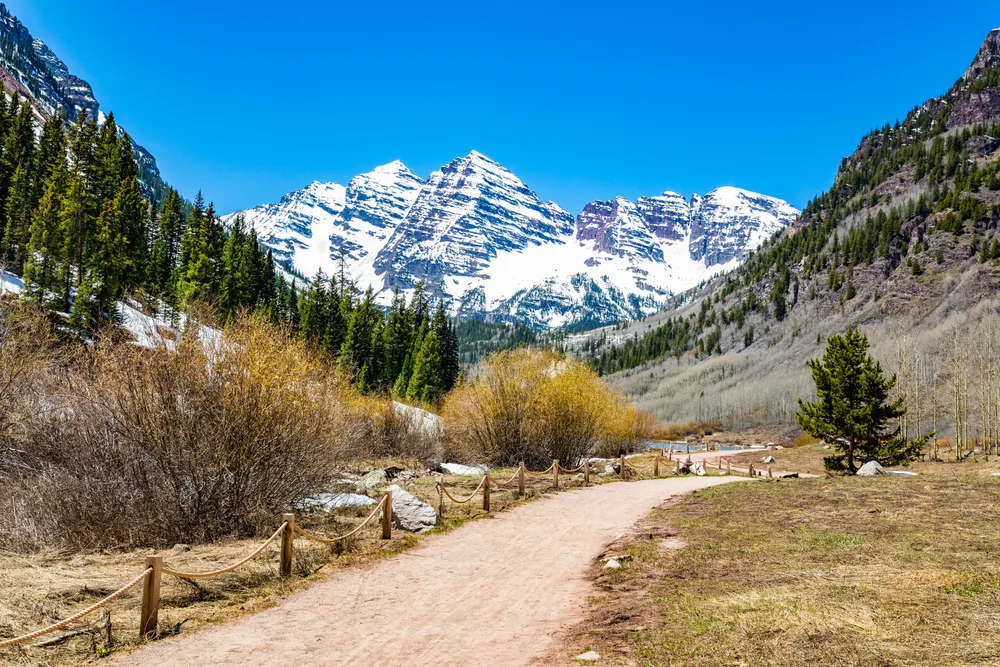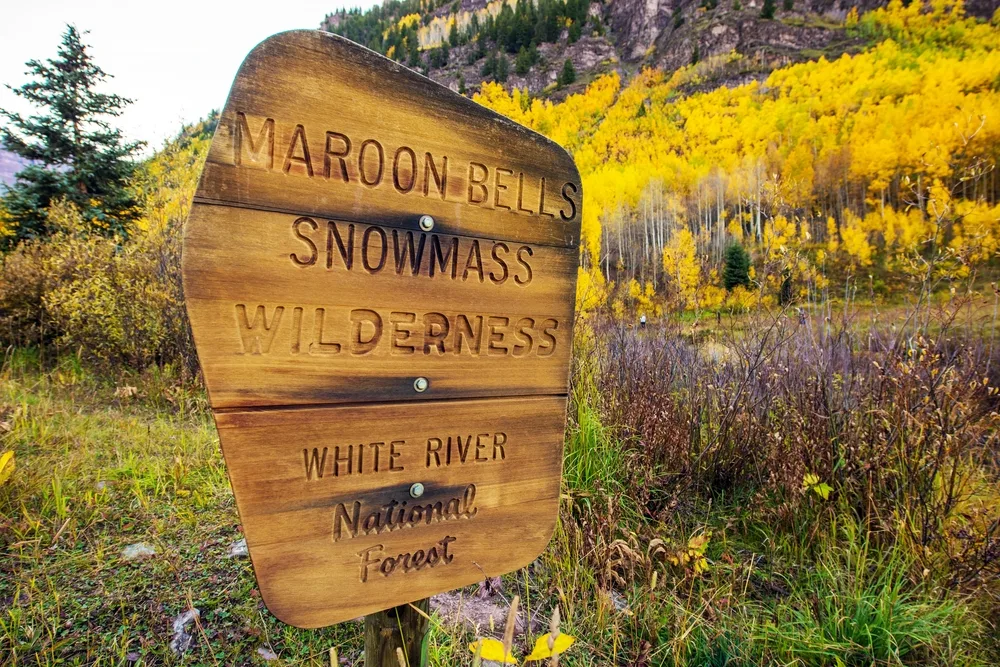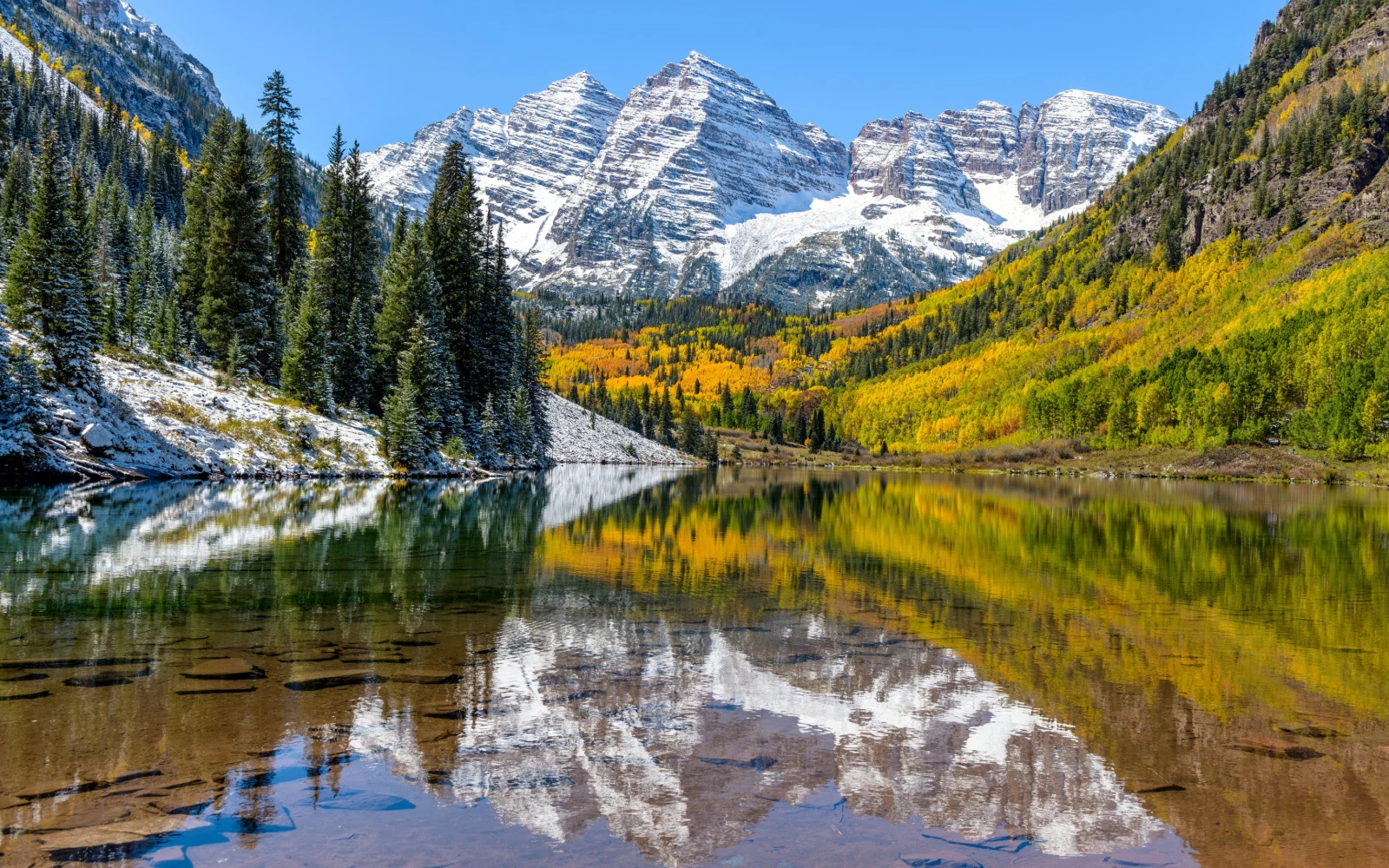What's the best time to visit Maroon Bells?
Maroon Bells is at its best in late spring or early summer when colorful flowers bloom, and September offers stunning fall foliage, but any time from May to September is great. Summers bring warmth, though higher elevations can be a bit cool, and are perfect for hiking, camping, and exploring with plenty of day-trip trails to choose from.
The Rocky Mountains are packed with incredible locations, but Maroon Bells is one of the most scenic and enjoyable. Located a short drive outside Aspen, Colorado, you’ll never forget standing in this majestic spot.
There’s plenty to do while visiting Maroon Bells and the surrounding area. You can go hiking, camping, or fishing, all while taking in incredible mountain views. But while there’s plenty to do, when is the best time to visit Maroon Bells? Here’s our take.
Overall Best Time to Visit Maroon Bells

Gerald A. DeBoer/Shutterstock
The best time to visit Maroon bells is in the late spring or early summer, as the spring rains invite the flowers to burst open in full bloom. It’s a picture-perfect landscape.
You can also visit during September to catch the stunning colors of the leaves, but going anytime from May to September is ideal. As expected for North America, the summer months are the warmest.
When you’re visiting this elevation, it can still get quite chilly, with some mountain peaks retaining snow year-round under the right conditions. But during the day and in the sunshine you can expect comfortable temperatures.
Hiking, camping, and wilderness exploration are also best in the summer. While intense thunder and lightning rain storms can roll in and preparation is vital, the warm summer months are the most comfortable time to rough it and take to the trail or backcountry.
Most people come just for day visits and have a selection of easy-to-moderate trails they can tackle. The 1-mile Maroon Lake Scenic Trail loop rounds the lake for a gentle stroll.
You can head 3.2 miles up the Maroon Creek Trail for more wildlife viewing or take the 3.6-mile Crater Lake Trail to get a glimpse of another alpine lake.
Cheapest Time to Visit Maroon Bells
The cheapest time to visit Maroon Bells is during the shoulder seasons, either in early spring or fall. Since the height of the tourist season is in the middle of the summer, you can avoid crowds by visiting during this time.
If you can go during the late spring or fall, you’ll get better deals on accommodations, rental cars, and activities in the area.
It can save you a good amount of cash. Book in advance to get the best flights, and use flexible dates when searching. The only issue is that the weather can be even more unpredictable and possibly much colder.
It’s not always the case, and sometimes spring and fall weather in the high-elevation spots of the Colorado Rocky Mountains can be perfect, but you’ll want to watch out for fast-moving storms.
Another issue is that the roads and some trails aren’t open year-round. As you probably expect, this spot can get tons of snow. The roads accessing the best parts of Maroon Bells close during the heaviest snow starting in November, then reopen in late May.
Least Busy Time to Visit Maroon Bells

Photo Spirit/Shutterstock
The least busy time to visit Maroon Bells is on the weekdays, regardless of the time of year.
The weekends bring in the most crowds, as people from nearby major cities like Denver, Grand Junction, and Colorado Springs make the drive over, in addition to the plentiful out-of-state tourists.
It might help you get cheaper flights, but to get the best deals, leave your dates flexible and fly into Denver. But if you can make your Maroon Bells visit during the weekdays, you’ll avoid some of these crowds.
That is helpful as the area gets to be extremely busy, especially in the middle of the summer.
To get photos without hoards of people standing around, go during the weekdays. It’ll also help your chances of getting a reservation and deals on transportation, such as rental cars.
You need a reservation to access the Maroon Bells Scenic Area, including the private vehicle trailhead or the Roaring Fork Transportation Authority (RFTA) shuttle from Aspen. If you’d like to stay overnight by camping, planning is crucial.
Permits are in limited supply and high demand and become available on rolling dates throughout the year. Believe it or not, you can camp during the winter if you want to avoid the crowds.
Worst Time to Visit Maroon Bells
For most people, the worst time to visit Maroon Bells is during the snowy winter months. As the snow rolls in during November, the roads accessing the main Maroon Bells trailheads are closed for safety.
Once the snow melts enough for them to plow them off, they reopen, usually in late May. If you’re willing to throw on warm clothes and hop on cross-country skis, snowshoes, or a snowmobile, you can visit Maroon Bells covered in a layer of white snow.
This time isn’t ideal for many, but it can be amazing if you like these adventures. Unfortunately, another problem with the winter months is that the accommodations and flights around Colorado can be expensive.
The major ski resorts draw in tons of visitors each year, filling up planes, rental cars, and hotels. Generally speaking, it’s the worst for Maroon Bells visitors if you would rather see them during the summer or shoulder seasons.
Other people might hate going during the peak season, usually in July and August.
During this time, the crowds will be the busiest, the hotels expensive, and the summer dryness in full swing. While it’s still a great time to go for many, it might not be your favorite. Go for shoulder season instead.
Things to Consider

Virrage Images/Shutterstock
Before you head over to Maroon Bells or start planning your trip, there are a few items you need to be aware of:
- Reservations required. Access to the area is extremely popular, and as a result, the authorities have instituted a reservation system for parking, shuttles, and camping. Book well in advance to ensure you get a spot.
- Changing weather. Colorado mountain weather can be unpredictable and change at the drop of a hat before any meteorologist can weigh in. You should always be prepared for cold temperatures and the possibility of rain. Going in the early morning can help your chances of avoiding afternoon showers.
- Altitude sickness. Maroon Bells is at an extremely high altitude compared to what most people are used to. This height can impact your body, even resulting in severe altitude sickness. Stay hydrated, limit alcohol intake, and don’t push yourself too hard.
- Fragile environment. The area is a delicate ecosystem that has seen negative consequences of human interaction. Do your best to stay on trails and clean up after yourself. And the delicate mudstone can crumble, becoming dangerous projectiles across the steep terrain.
- Wildlife. This area is home to an abundance of animals, including dangerous ones like bears, mountain lions, and moose. Don’t feed any wildlife. And pay attention to signage and ranger warnings during your visit. They are for your safety.
- Winter snow. From November to early May, the roads to Maroon Bells close down due to snow. You won’t be able to visit without getting in on snowshoes, skis, or a snowmobile.
So, When Should You Visit Maroon Bells?
Anytime from June through August is the best time to see the Maroon Bells. This time gets you the warmest weather and most stunning views, but spring and fall can also be great for blooming flowers or fall foliage.
The road to Maroon Bells closes entirely due to snow in the winter, typically from November to late May, so avoid going then, unless you want to hike in over snow. So what are you waiting for — book your trip today!



